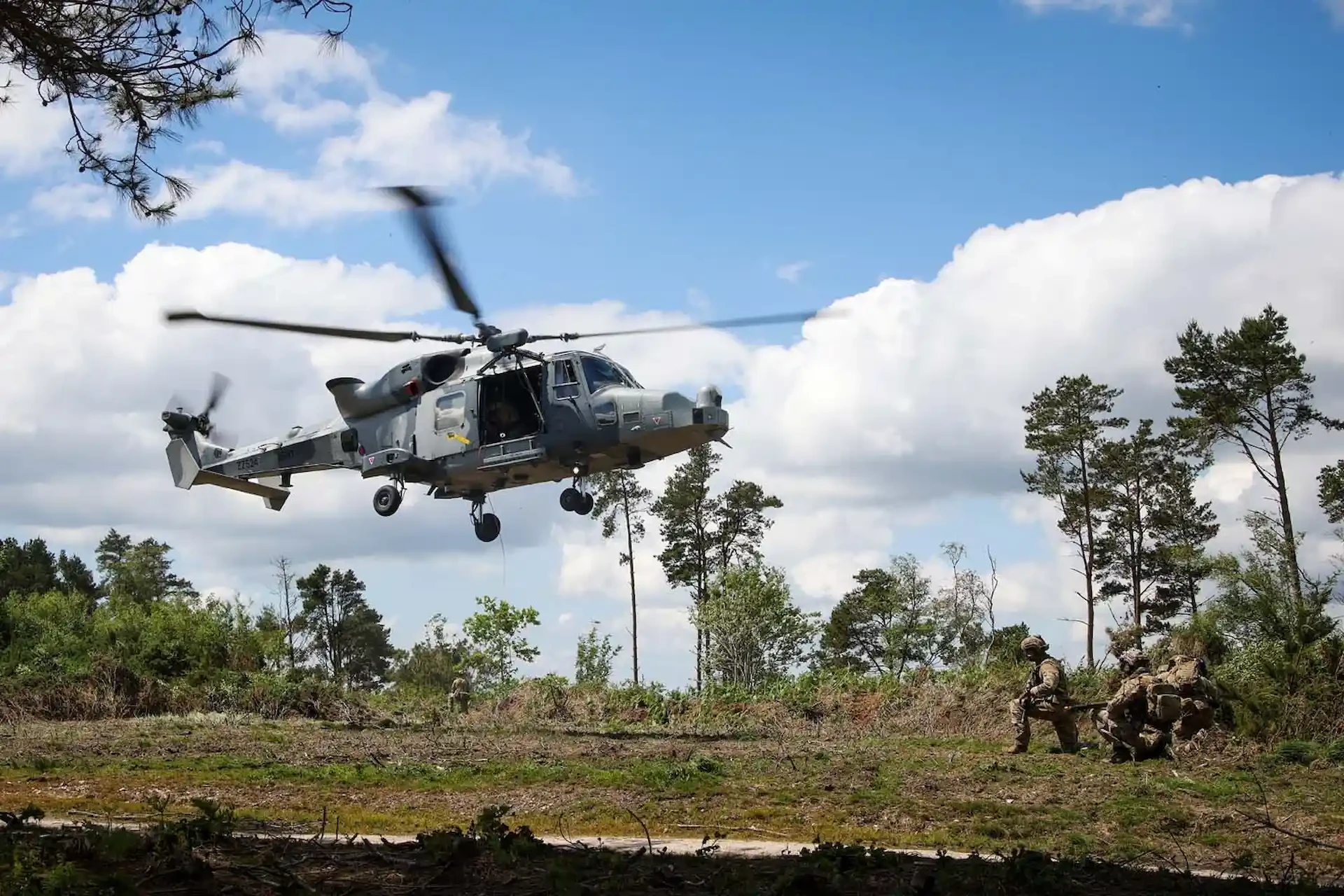British Commandos have been put through their paces with raid, insertion, and rescue techniques in a range of scenarios both at sea and on land with personnel from Commando Helicopter Force’s 847 Naval Air Squadron working with Commando Forces from a range of units during a week of intense training across the south coast of England.
A Wildcat helicopter from 847 NAS and Chinooks from 7 Squadron RAF were used for a
4-aircraft aviation raid near Goodwood and then helicasting off Portland before CHF 847 NAS completed Joint Personnel
Recovery serials near Exeter with the Royal Marines and 29 Commando.
Poor weather precluded getting into the objective area of the aviation raid, however this was used as a training evolution. It tested the formation commander’s captaincy decisions and the skills of the handling pilots as they battled through heavy rain under a low cloud base in falling light.
This was followed by helicasting in Portland Harbor with UK Commando Forces practicing the insertion technique at sea before being recovered by boats. It’s a skill which gets Commandos into the action quickly, dropping them from the back of helicopters into the ocean. The Royal Marines from M Company, 42 Commando, leapt from the Wildcat and Chinook helicopters into the water. Troops from 148 Battery and 29 Commando also took part in the heli-casting, jumping into Portland Harbor before being recovered by ribs to go ashore and continue training.
Two days later, the Royal Marines led a Joint Personnel Recovery exercise at Mutters Moor, in Devon, retrieving two downed pilots from 847 NAS, using a Wildcat helicopter as part of the rescue. Staying overnight using only the equipment they’d routinely carry in the aircraft, the downed aircrew practiced skills such as creating covert lay-up positions to avoid capture and using the emergency radio/navigation equipment.
It gave the Squadron chance to practice coordination with the marines to ensure safe and efficient extraction of the personnel in need of rescue – all while under “attack” from enemy forces. But it also meant they could run through key procedures of correctly identifying the personnel, not making any assumptions and potentially endangering the mission.
 HOME
HOME



